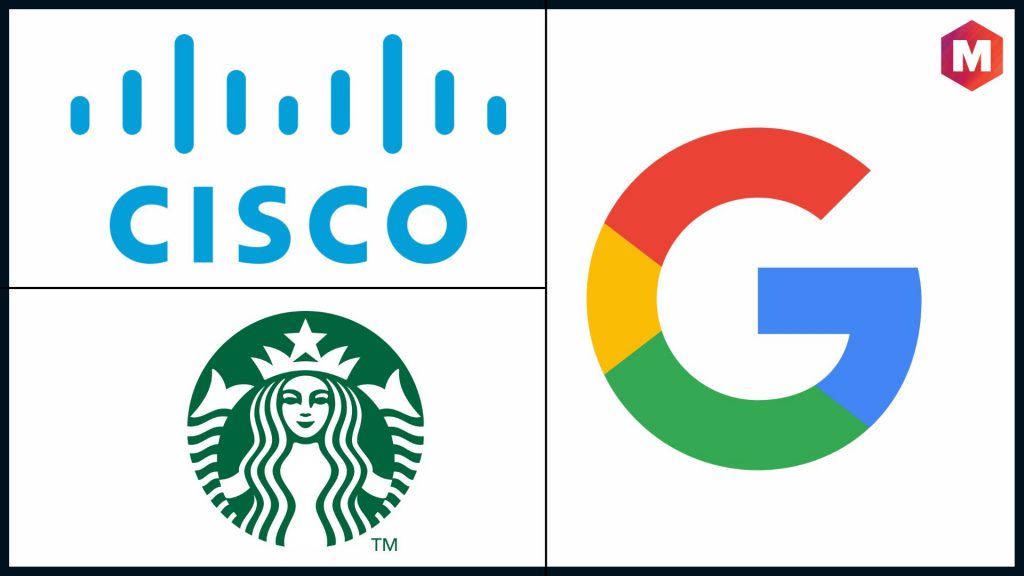Table of Contents
What Is Employer Branding?
Employer branding is the process of using marketing techniques to make a company’s name more attractive to potential employees. This can include everything from advertising open positions in a way that emphasizes the company culture, to improving employee satisfaction rates so that former workers will act as advocates for the business.
The goal of employer branding is to make a company more attractive to potential employees, which can lead to improved recruitment and retention rates. In turn, this can help a company save money on recruiting costs, and improve its overall performance. This can be done through various marketing and HR initiatives, such as:
- Improved job descriptions that focus on company culture and values
- Employee testimonials and stories on the company website and social media
- Employee referral programs
- Better onboarding and orientation programs
- Improved benefits and perks
Definition
Employer branding is defined as the strategy a company uses to communicate its employment value proposition to existing employees as well as future employees. This employee value proposition includes the company’s promises regarding work experience, career growth opportunities, and overall culture.
The company’s employer brand management efforts are designed to attract top talent and improve employee retention rates. The employer brand is essentially the company’s reputation as an employer. It consists of everything that employees and job candidates think, feel, and say about working for the organization.
What is the value of a strong Employer Brand?
When it comes to attracting top talent, a strong employer brand or corporate brand is essential. Candidates are increasingly doing their research on potential employers before applying for a job, and if your company doesn’t have a strong reputation, you could be missing out on some of the best candidates.
Strong employer branding efforts can also lead to improved employee retention rates. If your employees are happy with their jobs and feel like they are part of a positive work environment, they are less likely to look for a new job. This can save your company money in the long run, as turnover can be expensive.
A strong employer brand can help a company in many ways, including:
- Improving recruitment and retention rates
- Reducing recruiting costs
- Improving employee satisfaction
- Increasing productivity
- Enhancing the company’s reputation, etc
How to create an Employer Brand
Different steps involved in employer branding strategies are
1. Know your company’s unique value proposition
What makes your company a great place to work? What sets you apart from other employers in your industry? Answering these questions will help you develop targeted messages for your employer brand.
2. Conduct an employer brand audit
Take a close look at your current employer brand and determine what is working well and what could be improved. This will help you focus your efforts on the areas that will have the biggest impact.
3. Write an employer value proposition
An employer value proposition is a statement that describes what a company has to offer its employees. This can include things like job satisfaction, work-life balance, and career development opportunities.
4. Leverage current employees
Your current employees are some of your best brand ambassadors. Encourage them to share their positive experiences with potential candidates. Leveraging employee testimonials is a great way to improve your employer’s brand.
5. Cultivate a strong onboarding process
Your onboarding process is your chance to make a good first impression on new employees. Make sure it is engaging and informative, and that it sets the tone for a positive working relationship. It is also a great opportunity to share your company’s story and values.
6. Offer learning and development opportunities
Investing in employee development shows that you are committed to your employees’ growth and success. This can be a powerful attractor for top talent.
7. Use video, blog posts, photos, and slideshows to tell your company story
Visual content is a great way to engage potential candidates and give them a taste of what it’s like to work at your company.
8. Create a strong diversity and inclusion initiative
Diversity and inclusion are important for attracting and retaining top talent. Show potential candidates that your company is committed to creating a supportive and inclusive environment.
Tips to Improve your Employer Brand
Some of the key tips to improve the employer branding process are
1. Don’t just focus on compensation
While salary is important, it is not the only factor that potential candidates consider when evaluating job offers. Be sure to highlight other aspects of your company that make it a great place to work, such as your culture, values, and development opportunities.
2. Start a company blog
A company blog is a great way to share your company story and values with potential candidates. It is also a great platform for showcasing your employees’ work and highlighting your company culture.
3. Use rich media
Rich media, such as videos, photos, and infographics, is a great way to engage potential candidates and give them a taste of what it’s like to work at your company.
4. Hire for diversity
Diversity is important for attracting and retaining top talent. Make sure your recruiting and hiring practices are fair and inclusive, and that your workplace reflects the diversity of the world around us.
5. Create a strong careers site
Your careers site is your company’s first impression for many potential candidates. Make sure it is informative, engaging, and easy to navigate.
6. Optimize your application experience
The job application process is often the first interaction potential candidates have with your company. Make sure it is user-friendly and efficient, and that it gives candidates a positive impression of your brand.
7. Improve your candidate experience
The way you treat candidates during the hiring process says a lot about your company. Be sure to keep candidates informed and updated throughout the process, and let them know if they are not being considered for the role.
8. Use social media
Social media is a great way to connect with potential candidates and build your employer brand. Use it to share your company story, values, and culture.
9. Create engaging content
Content is a powerful tool for employer branding. Use your marketing team to tell your company brand story, highlight your employees’ work, and showcase your culture.
10. Encourage employee advocacy
Your employees are your brand ambassadors. Encourage them to share their experiences of working at your company with their networks. Employee advocacy can be a powerful tool for employer branding.
Benefits of Strong Employer Branding
1. Company Reputation
A positive employer brand will not only help you recruit great employees but also improve how outsiders view your business. A strong employer brand can help your company build a positive reputation, attracting more customers and business partnerships.
2. Company Culture
A strong employer brand can help you create a positive company culture that attracts and retains top talent. A positive company culture is essential for employee engagement and productivity.
3. Brand Perception
A strong employer brand can improve how potential employees perceive your company. A positive brand perception can help you attract top talent and improve your chances of making a great hire.
4. Brand Savings
A strong employer brand can help you save on recruiting and marketing costs. A positive employer brand can help you attract more qualified candidates, resulting in fewer job postings and less time spent on screening and interviewing candidates.
5. Talent Acquisition
A strong employer brand can help you attract top talent. A positive employer brand can help you attract more qualified candidates, resulting in fewer job postings and less time spent on screening and interviewing candidates.
6. Talent Magnet
A strong employer brand can help you attract and retain top talent. A positive employer brand can help you attract more qualified candidates and keep your best employees from leaving.
7. Referral Advantage
A strong employer brand can give you a referral advantage. A positive employer brand can help you attract more qualified candidates and keep your best employees from leaving.
8. Diverse Workspace
A strong employer brand can help you create a diverse workplace. A positive employer brand can help you attract a more diverse pool of candidates, resulting in a more diverse workforce.
9. Career Development
A strong employer brand can help you develop your employees’ careers. A positive employer brand can help you attract top talent and retain your best employees. A strong employer brand can also help you develop your employees’ careers by providing opportunities for career advancement.
Measuring your Employer Branding Strategy
There are several ways to measure your employer brand. Employer branding surveys are one way to gauge how potential candidates perceive your company. You can also measure your brand awareness and reach through social media metrics. Branding campaigns can also be evaluated by their ROI. Some of the metrics that can help you measure your employer brand-
1. Social media engagement rates
The number of social media interactions (likes, shares, comments) divided by the number of followers. This metric can help you gauge how well your content is resonating with your audience and how engaged your followers are.
2. Candidate net promoter scores (CNPS)
The percentage of candidates who would recommend your company to a friend or family member. With this metric, you can measure how content candidates are with their experience and if they would refer others to your business.
3. Brand sentiment by key talent personas
The percentage of positive mentions is divided by the total number of mentions for each key talent persona. If you’re wondering how job applicants feel about your company and if they would promote it to others, this metric will give you the answer.
4. Employee NPS scores
The percentage of employees who would recommend your company to a friend or family member. With this metric, you can track how content employees are and if they would recommend your company to others.
5. Employee retention data
The percentage of employees who stay with your company for a specific period. This metric will show you how loyal your employees are to the company and how content they are with their jobs.
6. Number of applications per job
The number of applications is divided by the number of open jobs. This metric lets you know if your company is appealing to job seekers and how many applications you’re receiving.
7. Career site traffic
The number of unique visitors to your career site. This metric allows you to evaluate your company’s success in attracting potential employees and how effective your career site is.
8. LinkedIn brand advocacy percentage
The number of LinkedIn members who have added your company to their profile is divided by the total number of LinkedIn members. This metric can help you gauge how well your employer brand is resonating with professionals on LinkedIn.
9. Employee referral percentage per hire
The number of employees who refer someone for a job is divided by the total number of hires. With this metric, you can see how effective your employee referral program is and if employees are promoting your company to others.
10. Interview pass-through rates
The number of candidates who complete the interview process is divided by the total number of candidates interviewed. This metric lets you know how well your interview process is working and if candidates are finding it to be a positive experience.
11. External market research vs. competitors
The number of people who say your company is the best choice is divided by the total number of responses. This metric can help you benchmark your company against others in your industry and see how you stack up.
Here is a video by Marketing91 on Employer Branding.
Employer Branding Examples
Cisco
Cisco is a great example of Employer Branding. They focus on attracting top talent and retaining them by providing a great work environment and culture. Their career page on their website provides and organizes resources for employees-to-be in a user-friendly way. The easy share feature across various social platforms is an innovative touch.
In addition, they give visitors a comprehensive navigation system to all job descriptions and career planning resources. In addition to product information, the landing page also includes employee success stories that share what it is like to work at Cisco. All important details are easily accessible to anyone who visits the site.
Google is another top company when it comes to Employer Branding. They focus on creating a great work environment that attracts and retains top talent. Their career page includes information on their benefits, culture, and how to apply for open positions. Google’s employer branding is world-renowned for its great employee policies and strong ability to build a desirable workplace for potential employees.
Every year, the company receives approximately 3 million resumes and only selects 7,000 candidates. This is perfectly logical given that being an employer of choice is a top priority for the organization. Google draws in top talent because of the various advantages they offer, such as a campus-like workspace and quick decision-making by leaders.
The Internship, starring Vince Vaughn and Owen Wilson, was released in 2013 and tells the story of two middle-aged men who land jobs at Google. Needless to say, it was an exemplary employer branding campaign that year.
Starbucks
Starbucks’ employer branding strategy is communication-heavy, utilizing social media platforms such as Twitter and Instagram to run employer branding profiles and reach current and future employees.
They also keep followers up-to-date with the latest job openings. What deserves your attention here is the way they refer to their employees: Partners. Creating a culture of respect and partnership is essential for employees to feel valued in a company, and Starbucks hits the nail on the head with this one.
Conclusion!
To conclude, employer branding is a term that encompasses all of the elements that make up an organization’s public image as an employer.
This includes everything from the way the organization markets itself to potential employees, to the way it treats its current employees. Employer branding is important because it can help organizations attract and retain top talent.
When done well, employer branding can also help improve employee satisfaction and engagement, which can in turn lead to better business outcomes.
What do you think is the most important element of employer branding? Let us know in the comments below!
Liked this post? Check out the complete series on Branding


